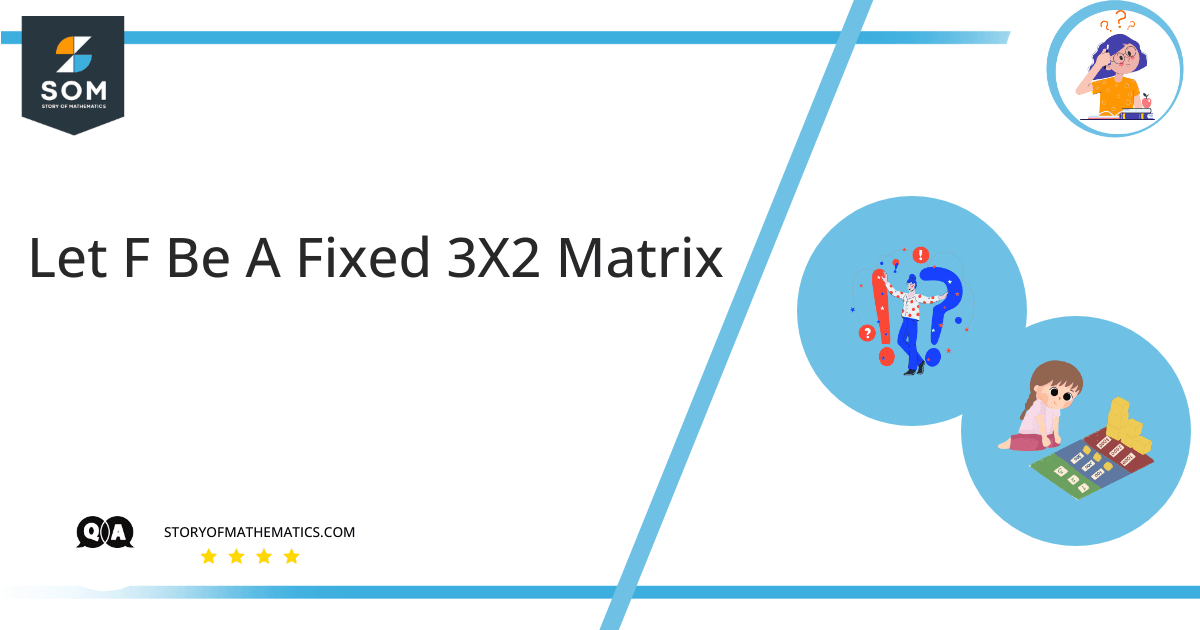
The aim of this question is to comprehend the key linear algebra concepts of vector spaces and vector subspaces.
A vector space is defined as a set of all vectors that fulfill the associative and commutative properties for vector addition and scalar multiplication operations. The minimum no. of unique vectors required to describe a certain vector space is called basis vectors. A vector space is an n-dimensional space defined by linear combinations of basis vectors.
Mathematically, a vector space V must fulfill the following properties:
– Commutative Property of Vector Addition: $ u \ + \ v \ = \ v \ + \ u $ where $u$, $v$ are the vectors in $V$
– Associative Property of Vector Addition: $ ( \ u \ + \ v \ ) \ + \ w \ = \ u \ + \ ( \ v \ + \ w \ ) $ where $u$, $v$, $w$ are the vectors in $V$
– Additive Identity: $ u \ + \ 0 \ = \ 0 \ + \ u \ = \ u $ where $0$ is the additive identity of $V$
– Additive Inverse: $ u \ + \ v \ = \ v \ + \ u \ = 0 $ where $u$ and $v$ are the additive inverse of each other within $V$
– Multiplicative Identity: $ u \ \cdot \ 1 \ = \ 1 \ \cdot \ u \ = \ u $ where $1$ is the multiplicative identity of $V$
– Distributive Property: $ k \ \cdot \ ( \ u \ + \ v \ ) \ = \ k \ \cdot \ ( \ v \ + \ w \ ) \ = \ k \ \cdot \ u \ + \ k \ \cdot \ v $ where $k$ is a scalar multiple and $u$, $v$, $ku$, $kv$ are belong to $V$
A subspace $W$ is a subset of a vector space $V$ that fulfills the following three properties:
– $W$ must contain a zero vector (an element of $V$)
– $W$ must follow closure property with respect to addition. (i.e. if $u$, $v$ \in $V$ then $u \ + \ v$ $\in$ $V$)
– $W$ must follow closure property with respect to scalar multiplication. (i.e. if $u$ \in $V$ then $ku$ $\in$ $V$ where $k$ is scalar)
Expert Answer
Property (1): Check if $H$ contains zero vector.
Let:
\[ A \ = \ 0 \]
Then for any matrix F:
\[ FA \ = \ 0 \].
So $H$ contains the zero vector.
Property (1): Check if $H$ is closed w.r.t. vector addition.
Let:
\[ A_1, \ A_2 \ \in \ H \]
Then, from distributive property of matrices:
\[ F(A_1 \ + \ A_2) \ = \ FA_1 \ + \ FA_2 \ = \ 0 \ + \ 0 \ = \ 0 \]
Since:
\[ FA_1 \ = \ 0, \ FA_2 \ = \ 0 \ \in \ H \]
and also:
\[ FA_1 \ + \ FA_2 \ = \ 0 \ \in \ H \]
So H is closed under addition.
Property (3): Check if $H$ is closed w.r.t. scalar multiplication.
Let:
\[ c \ \in \ R, \ A \ \in \ H \]
From scalar properties of matrices:
\[ F(cA) \ = \ c(FA) \]
Since:
\[ A \ \in \ H \]
And:
\[ c(FA) \ = \ c(0) \ = \ 0 \ \in \ H \]
So, $H$ is closed under scalar multiplication.
Numerical Result
$H$ is a subspace of $M_{2 \times 4}$.
Example
– Any plane $\in$ $R^2$ passing through the origin $(0, \ 0, \ 0)$ $\in$ $R^3$ is a subspace of $R^3$.
– Any line $\in$ $R^1$ passing through the origin $(0, \ 0, \ 0)$ $\in$ $R^3$ or $(0, \ 0)$ $\in$ $R^2$ is a subspace of both $R^3$ and $R^2$.
